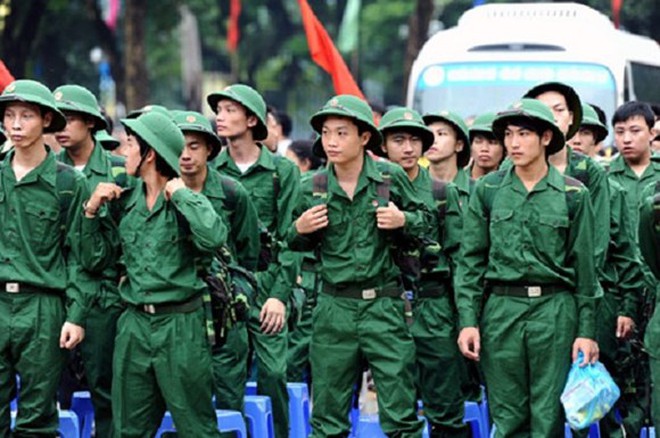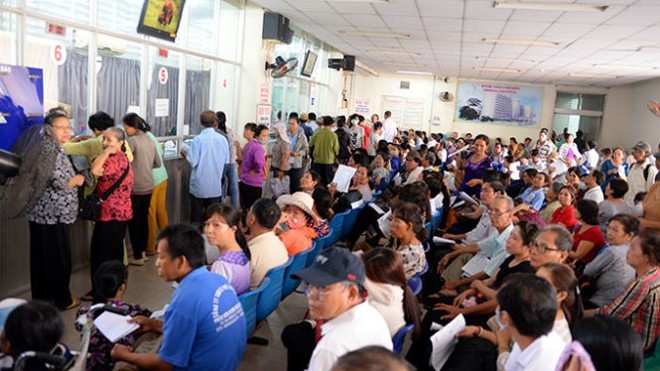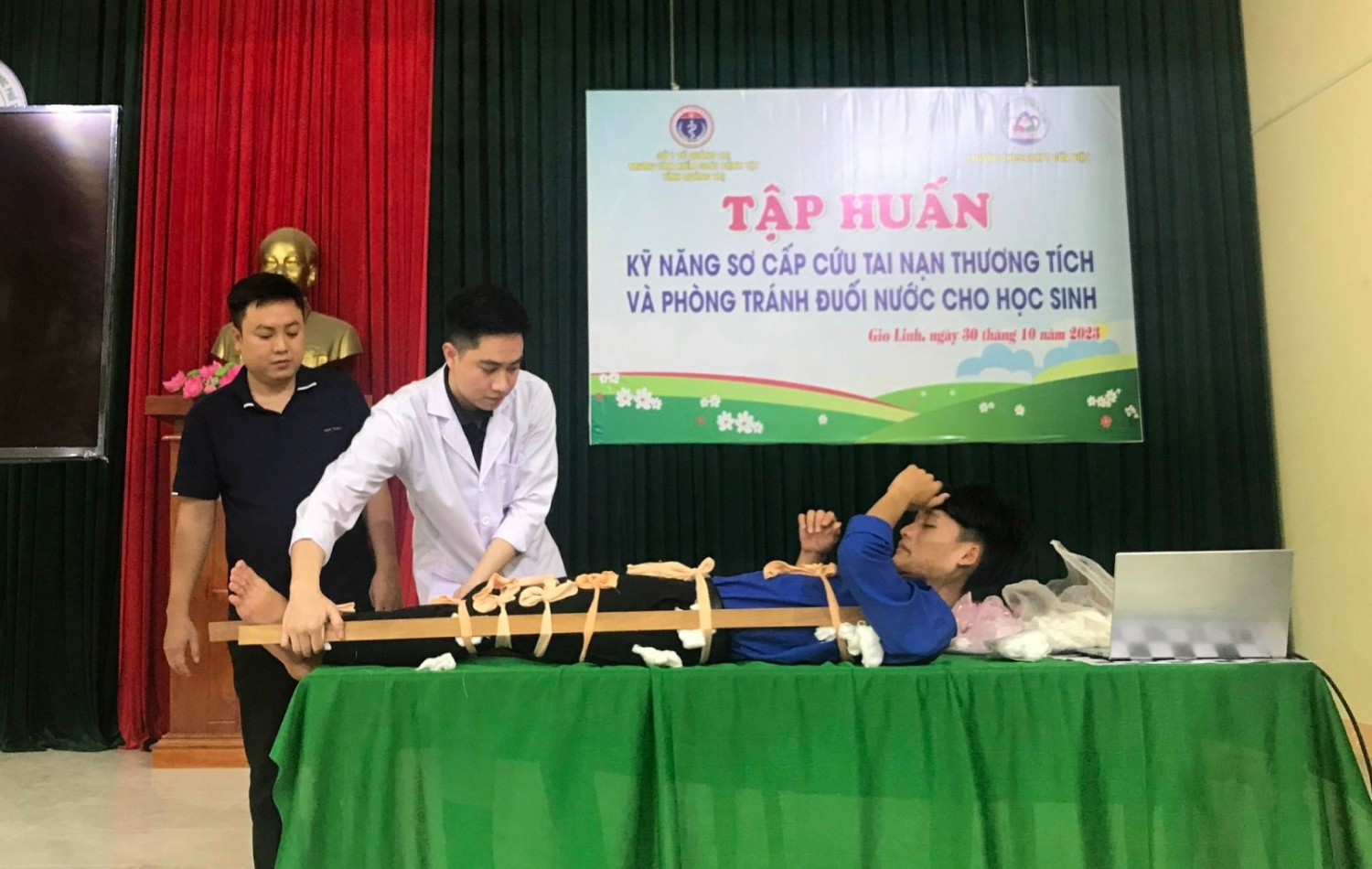Everything you need to know regarding newest regulations on health examination for military service in Vietnam
Below is everything you need to know regarding newest regulations on health examination for military service in Vietnam that. To be specific:
Public Posting of Military Service Health Examination Results Within 20 Days From the End of the Examination Period in Vietnam
Currently, we are in the military service health examination season, with December 31, 2016, being the final day of this examination period. According to the Military Service Law 2015, the health classification results must be publicly posted at the headquarters of the Commune People's Committee, agencies, and organizations within 20 days.
Military Service Health Examination Process 2016
The military service health examination process includes the following steps: Preliminary health screening, health examination, and health reevaluation (if necessary). To be specific:
- Step 1: Preliminary military service health screening:- Location: Commune Health Station;- Preliminary health screening content:- Detecting cases of inadequate physical health, deformities, disabilities, and diseases that warrant exemption from military service registration;- Gathering personal and family medical history.
- Step 2: Military service health examination:- Location: District Health Center;- Health examination content:- Physical examination;- Clinical examination of specialized fields according to criteria specified in Item II, Form 2, Appendix 4, attached to Joint Circular 16; during the examination process, if the examinee is rated at score 5 or score 6 in any specialized field, the specialist must report to the Chairman of the Medical Examination Council for consideration and decision on whether to continue the examination of other specialties;- If necessary, subclinical tests may be conducted to provide health conclusions as required by the Military Service Health Examination Council, including drug detection tests.
- Step 3: Military Service Health Reevaluation: If necessary, this step can be conducted to provide the final health examination conclusion.
- Location: To be announced later
- Examination content:
+ According to regulations for selecting and calling citizens to enlist;
+ Health classification
When conducting the health reevaluation, if the health card contains the letter “T” (temporary), the Reevaluation Health Council must conclude:
- If the disease is cured, the letter “T” is removed, and the health status is reclassified;- If the disease is not cured or worsens, reexamination and a conclusion of sufficient or insufficient health for enlistment must be conducted and reported back to the local authority.

Health Evaluation for Military Service When There Are Complaints About the Health of Individuals Called to Military Service in Vietnam
In the event of complaints related to the health of citizens called to military service, military service enrollment, or reserved military personnel, the District Military Service Council requests the Provincial Medical Assessment Council to conduct a health evaluation for military service.
The assessment requirements include:
- Evaluating the disease condition based on the request of the District Military Service Council;- The assessment conclusion must clearly identify the disease condition and classify health status.
The decision of the Provincial Medical Assessment Council is the final conclusion regarding the health complaints of citizens performing military service and military enrollment.
Military Service Health Classification
Based on the scores assigned to 8 criteria recorded in the military service health report card, classification is as follows:
- Type 1: All 8 criteria score 1;
- Type 2: At least one criterion scores 2;
- Type 3: At least one criterion scores 3;
- Type 4: At least one criterion scores 4;
- Type 5: At least one criterion scores 5;
- Type 6: At least one criterion scores 6.
Important Notes When Undergoing Health Examination
Required documents to present include:
- Health examination or health check call order from the Commander of the District Military Command;- Identity card;- Personal health-related documents (if any) to be submitted to the Health Examination Council or the Military Service Health Check Committee.
Additionally, when undergoing health checks, preliminary screenings, and health examinations for military service, it is important to:
- Avoid drinking alcohol or using stimulants;- Comply with the health examination area regulations;- Prohibit any actions that exploit the health examination to evade military service duties.
10 Diseases Exempt from Military Service
The diseases exempt from military service registration and not accepted into regular military units include:
- Mental disorders (F20-F29);
- Epilepsy G40;- Parkinson's disease G20;
- Blindness in one eye H54.4;
- Deafness H90;
- Sequelae from bone and joint tuberculosis B90.2;
- Sequelae from leprosy B92;
- Malignant diseases (malignant tumors, malignant blood diseases);
- HIV infection;
- People with severe and very severe disabilities.
Summary of Cases Exempt from Military Service Due to not meeting Health Standards in Vietnam
According to Clause 3, Article 4 of Circular 140/2015/TT-BQP regarding health standards for military recruitment:
- Citizens with health status classified as type 1, 2, 3 according to the Ministry of Health and Ministry of National Defense's health standards for performing military service are selected.
- Citizens with health status classified as type 3, who have refractive errors (myopia of 1.5 diopters or more, hyperopia of any degree), drug addiction, and HIV/AIDS are exempt from enlistment.
Based on the above standards, the following are the cases not meeting health standards for military service:
A. Health Classification Standards According to Physical Criteria
| HEALTH LEVEL | MALE | FEMALE | |||
| Height (cm) | Weight (kg) | Chest circumference (cm) | Height (cm) | Weight (kg) | |
| 4 | 155-156 | 41-42 | 73-74 | 148-149 | 40-41 |
| 5 | 153-154 | 40 | 71-72 | 147 | 38-39 |
| 6 | ≤ 152 | ≤ 39 | ≤ 70 | ≤ 146 | ≤ 37 |
Cases of extreme obesity or underweight will consider the BMI index (see note on recruitment examination).
BMI Index: BMI = Weight (kg) / {Height (m)}^2^
B. Health Classification Standards According to Diseases
1. Eye Diseases
| NO | DISEASE | SCORE |
| 1 | Vision (without glasses): | |
| Right eye vision Total vision of both eyes | ||
| 8/10 16/10 | 4 | |
| 6,7/10 13/10-15/10 | 5 | |
| 1,2,3,4,5/10 6/10-12/10 | 6 | |
| 2 | Myopia: | |
| - Myopia from -1.5 D to below -3 D | 3 | |
| - Myopia from -3 D to below -4 D | 4 | |
| - Myopia from -4 D to below -5 D | 5 | |
| - Myopia from -5 D or more | 6 | |
| - Myopia surgery over 1 year with good results | Based on uncorrected vision increase by 1 point | |
| 3 | Degenerative myopic retinopathy (from -3D or more) | 6 |
| 4 | Hyperopia: | |
| - Hyperopia below +1.5 D | 3 | |
| - Hyperopia from +1.5 D to below +3 D | 4 | |
| - Hyperopia from +3 D to below +4 D | 5 | |
| - Hyperopia from +4 D to below +5 D | 6 | |
| - Hyperopia surgery over 1 year with good results | 4 | |
| 5 | Astigmatism types | 6 |
| 6 | Pterygium: | |
| - Pterygium grade 3 | 4 | |
| - Pterygium covering the pupil | 5 | |
| - Recurrent pterygium surgery causing adhesion | 5 | |
| 7 | Corneal diseases: | |
| - Simple corneal scars, thin, small outside the central area | Based on vision increase by 1 point (consider points for assessment) | |
| - Corneal scars with iris adhesions | 6 | |
| - Active keratitis: | ||
| + Moderate | 4T | |
| 8 | Trachoma: | |
| - Without complications: | ||
| + During the progressive stage | Based on vision increase by 1 point (consider points for assessment) |
|
| + In the scarred stage | Retain classification based on vision (consider points) |
|
| - With complications (pannus, corneal scars) | 5 | |
| 9 | Eyelid trichiasis: | |
| - Without impact on vision | Based on vision increase by 1 point (consider points for assessment) | |
| - With vision impact | 4 (3) | |
| 10 | Conjunctivitis: | |
| - Vernal conjunctivitis | 4 | |
| 11 | Lacrimal duct: | |
| - Chronic dacryocystitis or multiple treatments without cure: | ||
| + In one eye | 5 | |
| + In both eyes | 6 | |
| 12 | Oculomotor muscle diseases: | |
| - Functional strabismus: | ||
| + With functional impairment | 5 | |
| - Paralytic strabismus affecting one or multiple oculomotor muscles (inward, outward, upward, downward strabismus) | 6 | |
| 13 | Nystagmus (pathological or congenital) | 5 |
| 14 | Eyelid and orbicularis diseases: | |
| - Eyelid scars causing eyelid deformity: unable to close eyes, adhesions, entropion, ectropion | 6 | |
| - Congenital or pathological ptosis | 6 | |
| - Orbital diseases | 6 | |
| 15 | Color blindness (one color or total) | 6 |
| 16 | Pigment epithelial degeneration (night blindness) | 6 |
| 17 | Congenital cataract | 6 |
| 18 | Other eye diseases: | |
| - Glaucoma, bilateral cataract, dislocated lens, uveitis, occluded pupil adhesions, retinal detachment, optic atrophy in one or both eyes | 6 | |
| - Pathological retinal conditions (retinitis due to hypertension, retinitis pigmentosa) or congenital (congenital retinal degeneration) | 6 |
View details of cases not meeting health standards for military service with the following diseases HERE.
- Dental, jaw, and facial diseases- Ear, nose, and throat diseases- Neurological, psychiatric diseases- Gastrointestinal diseases- Respiratory diseases- Musculoskeletal diseases- Cardiovascular diseases- Renal, urinary, and reproductive diseases- Endocrine, metabolic, lymphatic, and hematologic diseases- Dermatologic diseases- Gynecologic diseases
- Key word:
- military service
- Vietnam
- health examination
- Health
- Tattooing to Avoid Military Service: Is It Possible?
- Circular 148/2018/TT-BQP: New Regulations on the Selection and Conscription of Citizens for Military Service
- Circular 148/2018/TT-BQP: New Guidelines on Standards for Military Conscription
- Military Service 2017: What You Need to Know
- Is 1.5 Degrees of Nearsightedness Subject to Conscription?
- Postponement of Military Conscription in Which Cases?
-

- Procedures for provision of land-related information ...
- 11:01, 01/09/2024
-

- Ministry of Health's response to the petition ...
- 10:00, 01/09/2024
-

- Vietnam’s announcement of rates of investment ...
- 16:00, 31/08/2024
-

- Prohibited acts of accreditors of higher education ...
- 13:00, 31/08/2024
-

- Criteria for assessment of construction of safe ...
- 12:30, 31/08/2024
-

- Procedures for provision of land-related information ...
- 11:01, 01/09/2024
-

- Ministry of Health's response to the petition ...
- 10:00, 01/09/2024
-

- Regulations on Study Time for Primary School Students ...
- 09:00, 01/09/2024
-

- State Policy on Road Traffic Order and Safety ...
- 08:00, 01/09/2024
-

- Regulations on the Effectiveness of the Latest ...
- 18:30, 31/08/2024
 Article table of contents
Article table of contents
